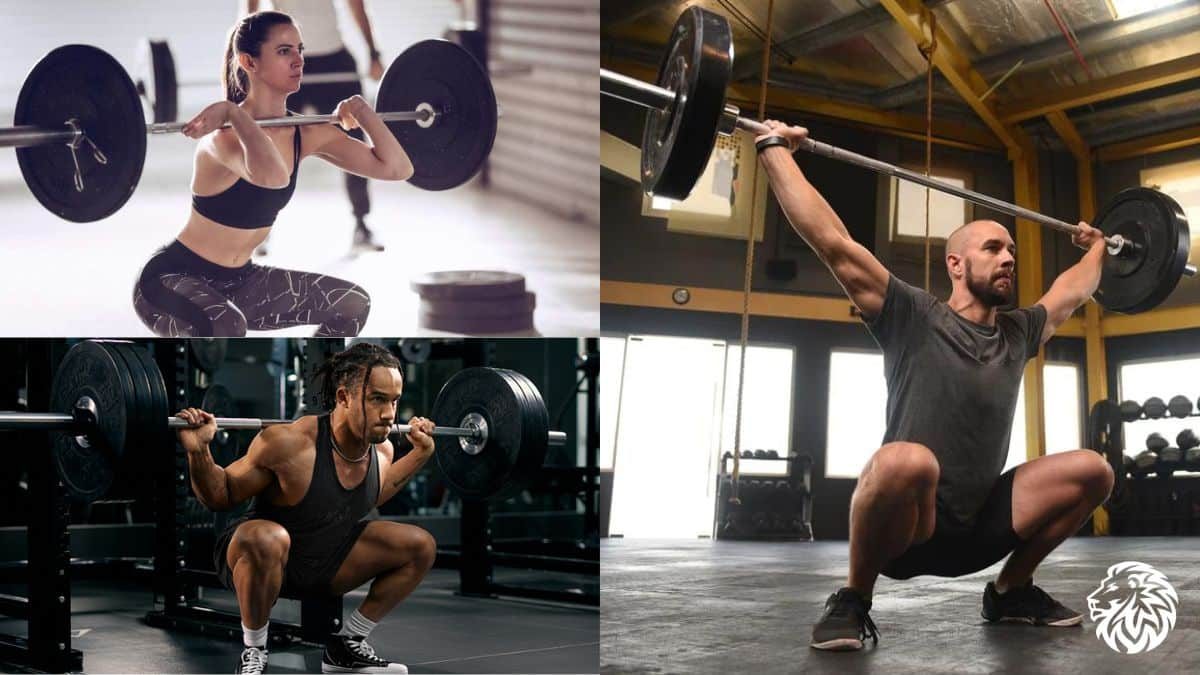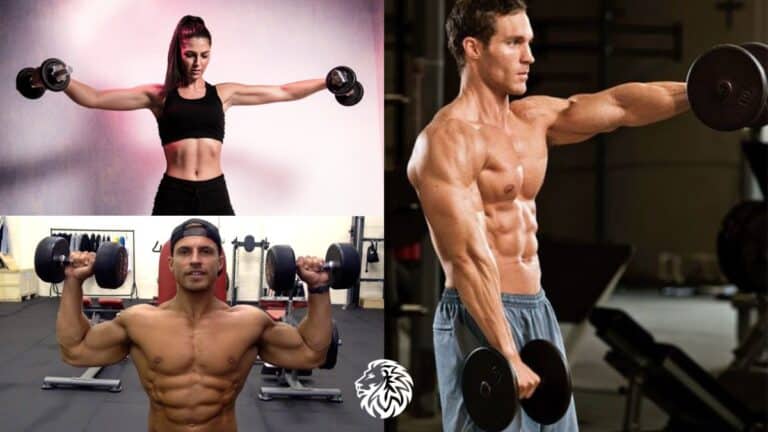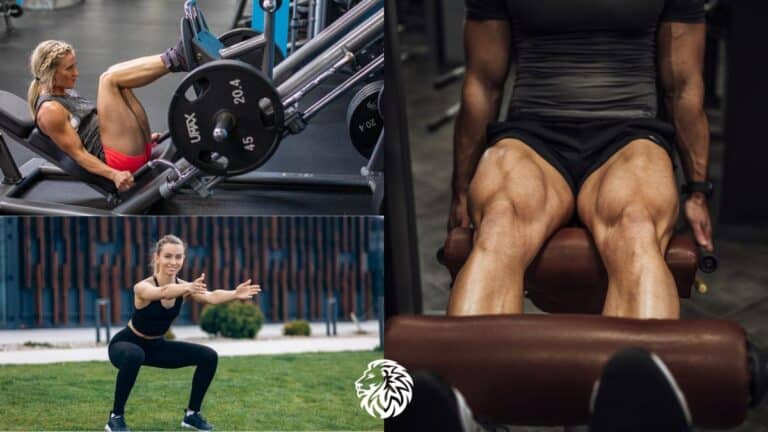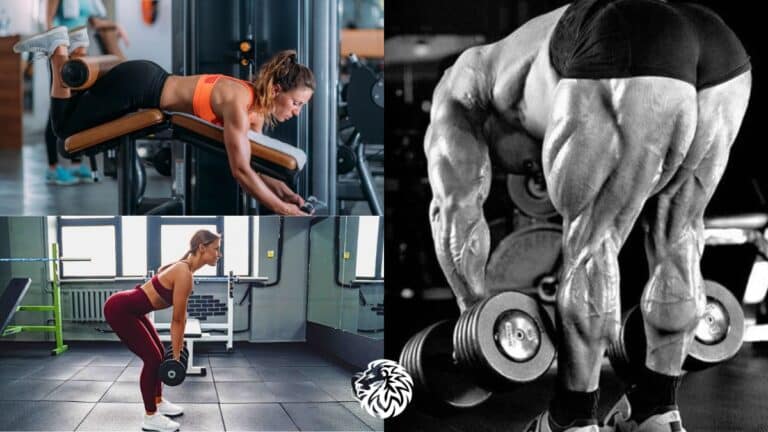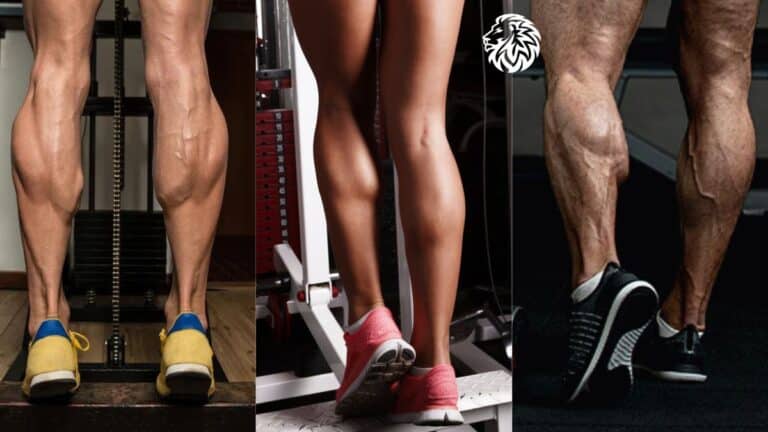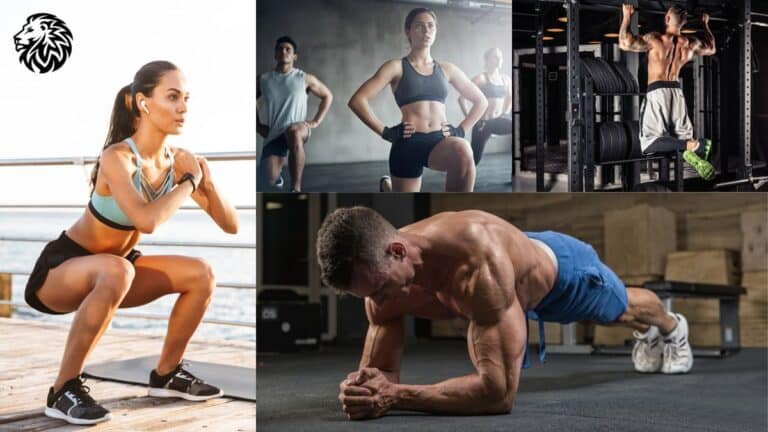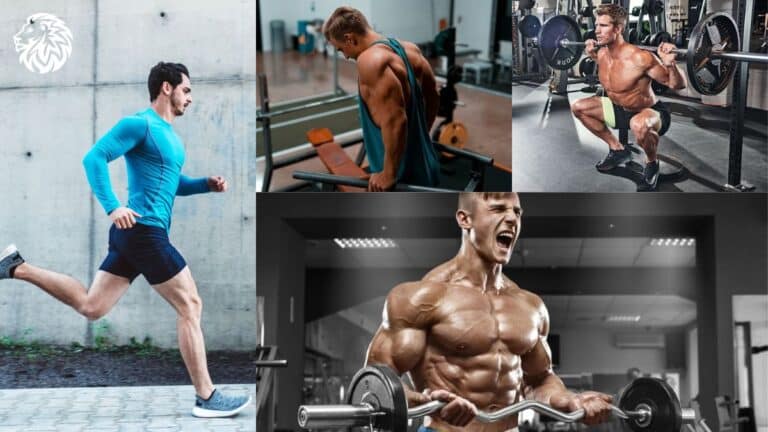Quadriceps, commonly known as quads, are among the most significant muscle groups in our bodies. They play a crucial role in basic activities like walking, running, and jumping, and are pivotal for athletic performance. Strong quads are not only essential for enhanced strength and power, but they also contribute to better knee stability, reducing the risk of injuries. This underscores the importance of incorporating quad exercises into fitness routines.
Barbells, due to their versatility and the ability to load significant weight, are an excellent tool for quad development. They enable a range of exercises that can target the quads effectively, promoting muscle growth and strength. Additionally, barbell exercises can be adjusted for all fitness levels, making them a staple in both beginner and advanced workout programs.
In this article, we will explore the 7 best barbell quad exercises that can be integrated into your workout regimen. These exercises include:
- Back Squat: A classic exercise for overall leg development, particularly the quads.
- Front Squat: Shifts the focus more towards the quads compared to the back squat.
- Bulgarian Split Squat: A unilateral exercise that challenges balance and targets each quad individually.
- Barbell Lunges: Enhances functional strength and mobility.
- Barbell Step-ups: A great exercise for developing quad strength and muscular endurance.
- Barbell Hack Squat: Focuses on the lower portion of the quads.
- Overhead Squats: A total body exercise that demands strength and stability from the quads.
Each of these exercises not only strengthens the quads but also contributes to overall lower body strength and fitness. Let’s dive in to learn how to perform these exercises correctly and safely.
The 7 Best Barbell Quad Exercises
Exercise 1: Back Squat
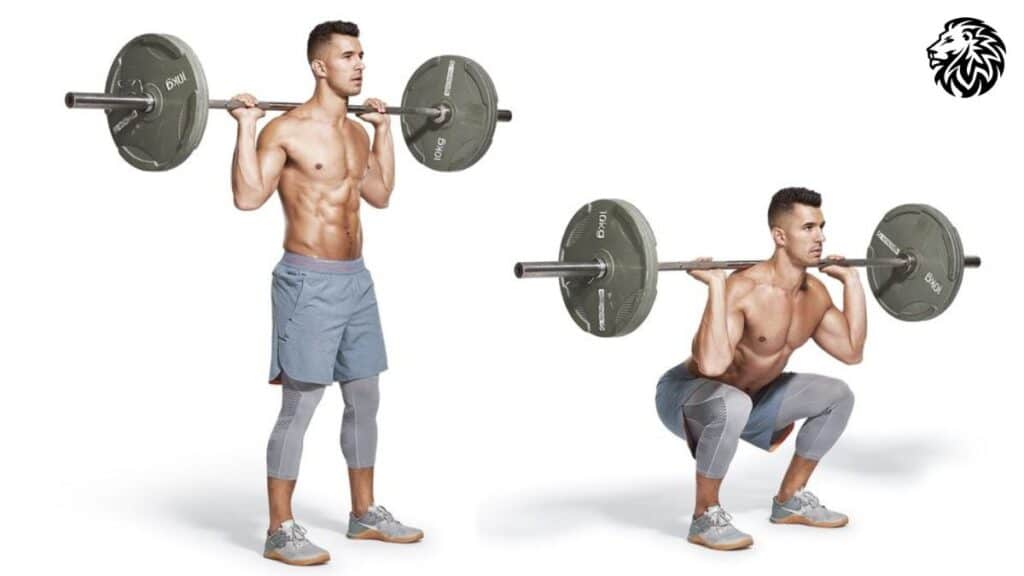
Description and Impact on the Quads: The back squat is one of the most fundamental and effective exercises for building lower body strength, particularly targeting the quadriceps. It also engages the glutes, hamstrings, and core, making it a comprehensive lower body workout. The back squat places significant emphasis on the anterior (front) part of the thigh, ensuring substantial quad development and strength.
Step-by-Step Instructions:
- Start Position: Begin by setting a barbell in a squat rack at about shoulder height. Stand under the bar, positioning it across your shoulders and traps. Keep your feet shoulder-width apart, toes slightly pointed out.
- Lift Off: Grasp the bar with both hands and lift it off the rack by straightening your knees and hips. Take a step back and stabilize yourself.
- Descent: Take a deep breath, brace your core, and begin to lower your body by pushing your hips back and bending your knees. Keep your chest up and back straight throughout the movement.
- Bottom Position: Lower yourself until at least your thighs are parallel to the ground. Your knees should be in line with your toes, and your back should remain neutral.
- Ascent: Drive through your heels to push the floor away and rise back to the starting position. Exhale as you near the top of the movement.
- Repeat: Perform the desired number of repetitions. When finished, carefully walk forward to rack the barbell.
Tips for Safety and Maximizing Effectiveness:
- Warm-Up: Always start with a warm-up to prepare your muscles and joints for the squat. Light cardio and dynamic stretches are beneficial.
- Proper Form: Maintain a neutral spine throughout the exercise. Avoid rounding or overarching your back.
- Foot Placement: Your feet should be flat on the ground. Avoid lifting your heels or toes during the movement.
- Knee Position: Ensure your knees do not collapse inward. They should track in line with your toes.
- Depth: Aim for at least parallel depth, where your thighs are horizontal to the ground, to fully engage the quads.
- Breathing: Breathe in on the way down and breathe out on the way up. Proper breathing helps maintain intra-abdominal pressure for a stable core.
- Progress Gradually: Increase weight gradually to avoid injury. Focus on mastering form before adding significant weight.
- Use a Spotter: For heavier lifts, use a spotter for safety, especially when attempting maximal loads.
Incorporating the back squat into your routine can lead to significant improvements in quad strength and overall lower body development.
Exercise 2: Front Squat
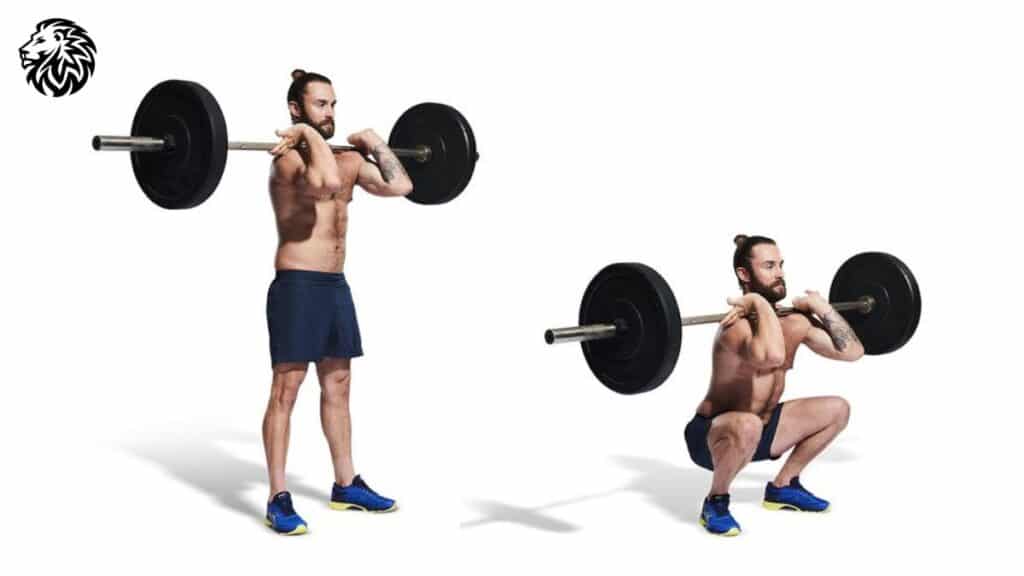
Explanation and Unique Benefits for the Quads: Front squats are a variation of the traditional squat where the barbell is held at the front of the body, resting on the shoulders. This shift in bar placement alters the mechanics of the exercise, placing more emphasis on the quadriceps compared to back squats. The upright torso position in front squats requires greater activation of the anterior thigh muscles, making it an excellent exercise for quad development. Additionally, front squats engage the core more intensely and are often preferred for individuals with lower back issues.
Detailed Instructions for Proper Execution:
- Start Position: Position the barbell on a rack at shoulder height. Step up to the bar and place it just above your chest, resting on your front shoulders. Cross your arms and grasp the bar with your hands for stability, elbows pointing forward.
- Lift Off: With your feet shoulder-width apart and toes slightly pointed out, lift the bar from the rack by straightening your body. Take a step back and find your balance.
- Descent: Inhale and brace your core. Begin lowering your body by bending your knees and hips, keeping your elbows high and torso as upright as possible.
- Bottom Position: Lower yourself until your thighs are at least parallel to the ground. Ensure your knees track over your toes and keep your weight distributed evenly across your feet.
- Ascent: Drive through your heels to return to the starting position, exhaling as you rise. Keep your core tight and elbows up throughout the movement.
- Repeat: Complete the desired number of reps. After finishing, carefully walk forward to rack the barbell.
Common Mistakes to Avoid:
- Dropping Elbows: Lowering your elbows can cause the bar to roll off your shoulders. Keep your elbows up to maintain the bar position.
- Leaning Forward: Avoid leaning too far forward, as this can place unnecessary stress on the lower back and shift focus away from the quads.
- Improper Depth: Not squatting deep enough can reduce the effectiveness of the exercise. Aim for at least parallel to fully engage the quads.
- Losing Core Tightness: A loose core can lead to a rounded back. Keep your core tight throughout the entire movement for stability and safety.
- Inadequate Warm-Up: Like any squat, a proper warm-up is essential to prepare your muscles and joints.
- Incorrect Foot Position: Your feet should be flat on the ground, with weight distributed evenly. Avoid lifting your heels or toes.
By focusing on proper form and technique, the front squat can be a highly effective exercise for building strong and powerful quads, while also improving core strength and stability.
Exercise 3: Bulgarian Split Squat
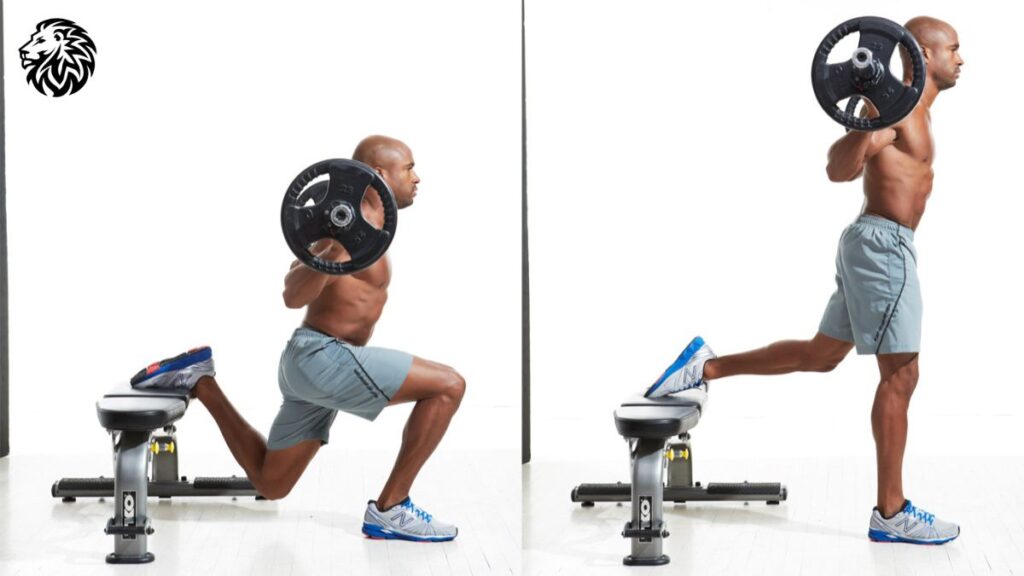
Description and Benefits: The Bulgarian Split Squat is a unilateral leg exercise, meaning it primarily works one leg at a time. This exercise is performed with one foot elevated behind you, focusing intensely on the front leg’s quadriceps, glutes, and hamstrings. The nature of this exercise also challenges your balance and coordination, making it beneficial for improving overall stability and addressing muscle imbalances between legs. It’s particularly effective for athletes or individuals seeking to enhance unilateral leg strength, which is crucial for various sports and daily activities.
Step-by-Step Guide on Performing with a Barbell:
- Setup: Place a barbell in a squat rack at about mid-chest height. Position a bench or stable platform behind you—it will be used to elevate your rear foot.
- Starting Position: Stand in front of the barbell and lift it off the rack, resting it on your shoulders as you would for a back squat. Step away from the rack and position yourself a few feet in front of the bench.
- Foot Placement: Place one foot flat on the ground and the other foot on the bench behind you. Your front foot should be far enough forward so that when you squat down, your knee stays behind your toes.
- Performing the Squat: Lower your body by bending the knee of your front leg. Keep your torso upright and your front foot firmly planted. Lower yourself until your front thigh is parallel to the ground or as close as you can comfortably get.
- Ascending: Drive through the heel of your front foot to return to the starting position.
- Repetitions: Perform the desired number of repetitions, then switch legs and repeat the same number on the other side.
Variations to Modify Difficulty:
- To Decrease Difficulty: Start without a barbell, using just your body weight. As you progress, you can hold dumbbells in each hand before moving to a barbell.
- To Increase Difficulty: Increase the weight of the barbell. You can also elevate your front foot for a deeper squat, intensifying the exercise.
- Balance Challenge: For an added balance challenge, try the exercise without the rear foot elevated.
Common Mistakes to Avoid:
- Leaning Too Far Forward: Keep your torso as upright as possible to maintain balance and properly target the quadriceps.
- Overextending the Knee: Ensure your front knee does not extend beyond your toes, as this can put undue stress on the knee joint.
- Losing Balance: If you find it hard to balance, start with a lower bench or platform, or practice the movement without weights first.
- Inconsistent Depth: Strive for consistent depth in each repetition to maximize the benefits of the exercise.
By incorporating Bulgarian Split Squats into your leg routine, you can significantly enhance unilateral strength, improve balance, and address any imbalances in leg development.
Exercise 4: Barbell Lunges
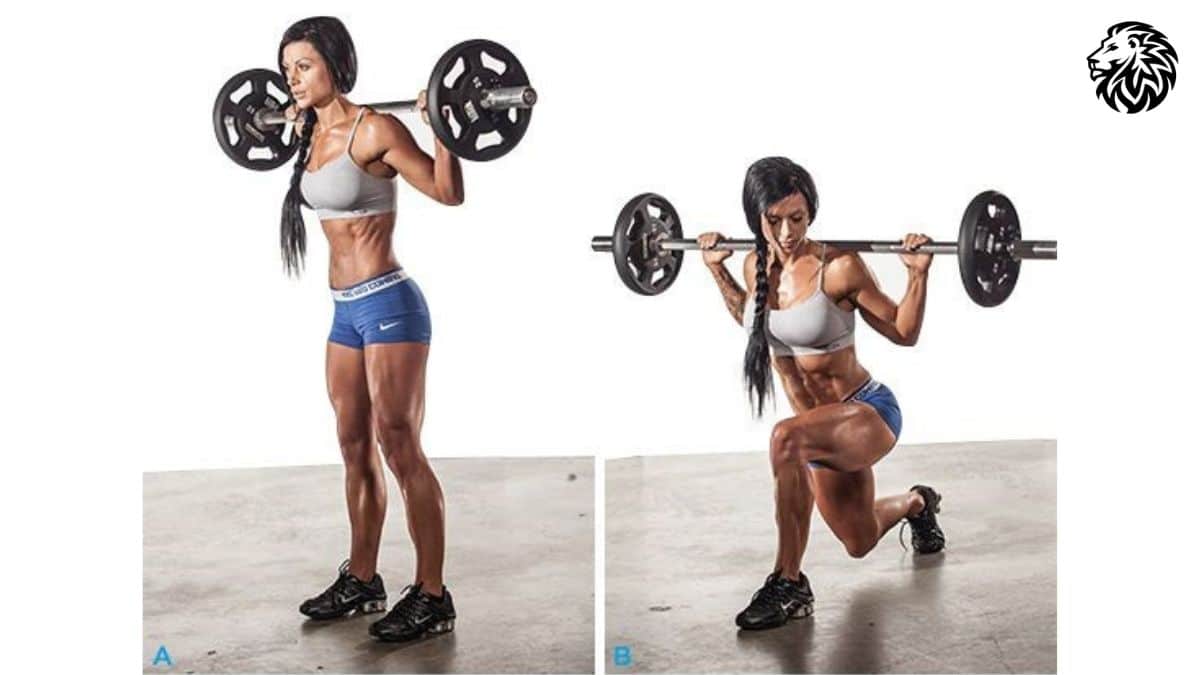
Overview of How Lunges Target the Quads: Barbell lunges are a dynamic and versatile exercise that effectively targets the quadriceps, along with the glutes, hamstrings, and calves. This exercise involves a step forward, backward, or sideways with one leg, lowering the body until the front thigh is parallel to the ground and the back knee is close to touching it. This movement pattern places significant stress on the quads of the front leg, promoting strength and muscle growth. Lunges also engage the core and require balance, making them beneficial for overall lower body development and stability.
Instruction on Proper Form and Technique:
- Starting Position: Stand upright with your feet hip-width apart. Place a barbell on your shoulders, similar to the starting position of a back squat.
- The Lunge: Step forward with one leg, far enough so that when you lower your body, your front thigh becomes parallel to the floor and your back knee nearly touches the ground. Keep your front knee aligned with your toes.
- Lowering the Body: As you step forward, lower your body by bending both knees, ensuring your front knee does not go beyond your toes. The back knee should come close to but not touch the ground.
- Returning to Start: Push off with your front foot, engaging your quads and glutes to return to the starting position.
- Repeating the Movement: Alternate legs, performing an equal number of lunges on each side.
Tips on How to Incorporate Lunges into a Workout Routine:
- Warm-Up: Incorporate lunges at the beginning of your leg workout after a proper warm-up. This can help activate the muscles for more intense exercises later.
- Variations: Use different lunge variations (e.g., reverse lunges, lateral lunges) to target the muscles from various angles.
- Superset with Other Exercises: Pair lunges with other leg exercises like squats or leg presses for a more intense workout.
- Progressive Overload: Gradually increase the weight of the barbell as you become more comfortable with the exercise to continue challenging your muscles.
- Frequency: Incorporate lunges 1-2 times per week, allowing adequate recovery time between sessions.
- Focus on Form: Prioritize proper form over weight to maximize the effectiveness of the exercise and prevent injury.
By regularly including barbell lunges in your leg workout, you can enhance quad strength, improve balance and stability, and contribute to a well-rounded lower body fitness regime.
Exercise 5: Barbell Step-ups
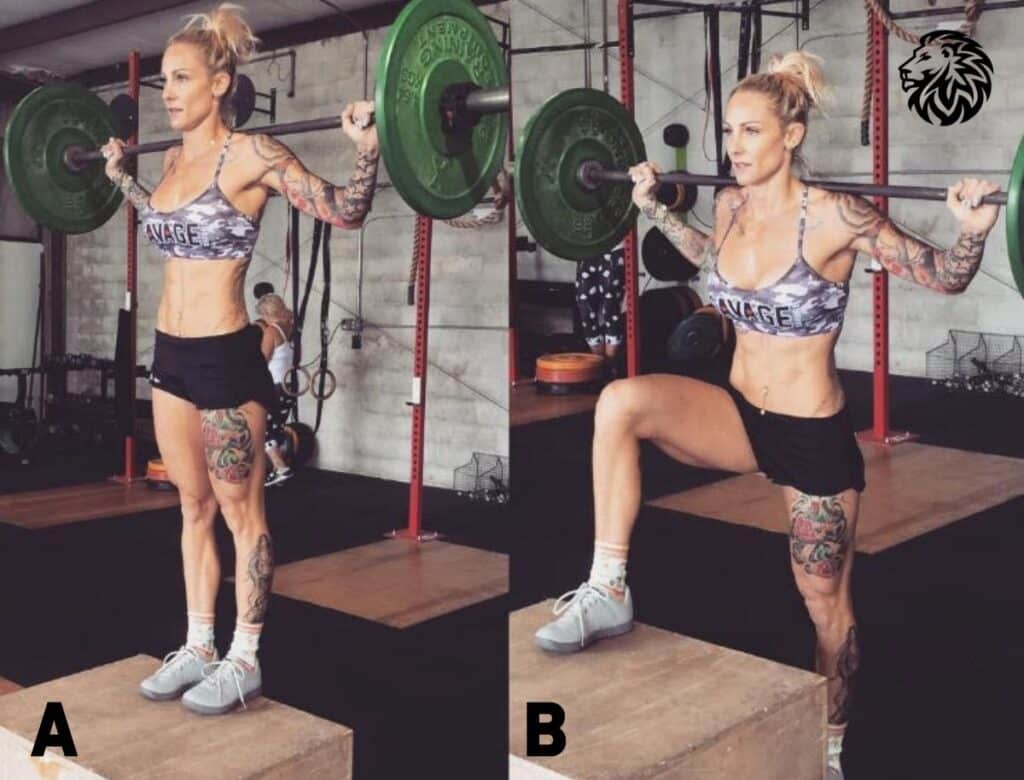
Introduction and Benefits: Barbell step-ups are a functional exercise that targets the quadriceps, glutes, and hamstrings. This exercise involves stepping onto an elevated platform or bench with a barbell placed on your shoulders. Step-ups are particularly effective for developing unilateral leg strength and balance, as each leg works independently. This helps in correcting muscle imbalances and improving overall leg symmetry. Additionally, barbell step-ups engage the core and stabilizing muscles, enhancing coordination and functional fitness, which is beneficial for daily activities and various sports.
Detailed Instructions on Performing the Exercise Correctly:
- Setup: Place a barbell on your shoulders, similar to the back squat position. Stand in front of a bench or a sturdy, elevated platform. The height should allow your knee to be at a 90-degree angle when your foot is on the platform.
- Starting the Step-Up: Facing the bench, place one foot firmly in the center of it. Keep your chest up and your gaze forward.
- Executing the Movement: Press through the heel of your elevated foot, extending your knee and hip to step up onto the bench. Your trailing leg can either stay in the air or lightly touch the bench for balance.
- Lowering Phase: Carefully step back down to the starting position, controlling the movement with your lead leg.
- Repetitions: Complete all the repetitions on one leg before switching to the other leg.
Suggestions for Integrating Step-ups into Leg Training:
- As a Primary Exercise: Use barbell step-ups early in your workout as a primary leg exercise, especially if focusing on strength and muscle building.
- In a Circuit or Superset: Incorporate them into a circuit or superset them with other exercises like lunges or squats for a more intense workout.
- Variations: Experiment with different heights of the step to alter the difficulty. Higher steps will place more emphasis on the glutes and hamstrings.
- Progressive Overload: Increase the weight of the barbell gradually to continuously challenge your muscles.
- Frequency: Include step-ups in your leg routine 1-2 times per week, depending on your overall fitness goals and workout split.
- Balance with Other Exercises: Combine with both unilateral and bilateral leg exercises to ensure a well-rounded leg workout.
Barbell step-ups are an excellent exercise for those looking to enhance leg strength, balance, and functional fitness. By integrating them into your leg training routine, you can achieve a more balanced and comprehensive lower body development.
Exercise 6: Barbell Hack Squat
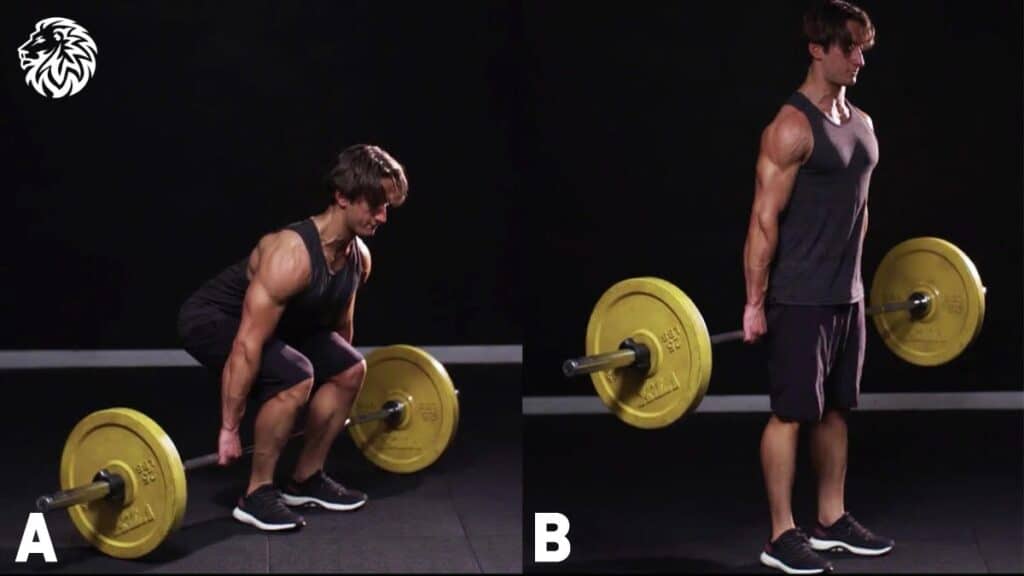
Explanation and Effectiveness for Quads: The barbell hack squat is a lesser-known but highly effective exercise for targeting the quadriceps. It’s performed with a barbell held behind the legs, resembling a reverse deadlift. This unique positioning shifts the emphasis more towards the quads, compared to traditional squats. The hack squat also engages the glutes and lower back, but the upright torso position and mechanics of the lift place significant stress on the quadriceps, making it an excellent exercise for building quad strength and size.
Step-by-Step Guide on Executing the Exercise:
- Starting Position: Stand with your feet shoulder-width apart, with a barbell behind your heels. Your toes should be pointed slightly outward.
- Grip and Posture: Bend at your knees and hips to reach down and grab the barbell with an overhand grip, hands shoulder-width apart. Keep your spine straight and chest up.
- Lifting the Barbell: Inhale, brace your core, and lift the barbell by straightening your legs and hips. Keep the barbell as close to your legs as possible throughout the movement.
- Standing Position: Once you are standing upright, pause briefly. Your shoulders should be back, and your chest should remain puffed out.
- Lowering the Barbell: Reverse the motion by bending at the knees and hips to lower the barbell back to the starting position, just behind your heels.
- Repetition: Perform the desired number of repetitions while maintaining proper form.
Advice on Avoiding Common Form Errors:
- Maintain Upright Posture: Ensure your back remains straight and chest up throughout the exercise. Avoid leaning too far forward, as this can strain the lower back.
- Bar Path: Keep the barbell close to your legs. Allowing it to drift away from your body can lead to improper form and reduced effectiveness.
- Controlled Movements: Avoid jerky or rapid movements. Lower and lift the barbell in a controlled manner to maximize quad engagement and minimize the risk of injury.
- Foot Positioning: Ensure your feet are firmly planted, and weight is evenly distributed. Do not let your heels lift off the ground.
- Knee Tracking: Make sure your knees track in line with your toes and do not cave inward.
- Breathing Technique: Breathe in as you lower the barbell and breathe out as you lift it. Proper breathing helps maintain intra-abdominal pressure and stability.
The barbell hack squat is a powerful exercise for those looking to specifically target and strengthen their quadriceps. When performed correctly and incorporated into a leg workout routine, it can significantly contribute to leg development and strength.
Exercise 7: Overhead Squats
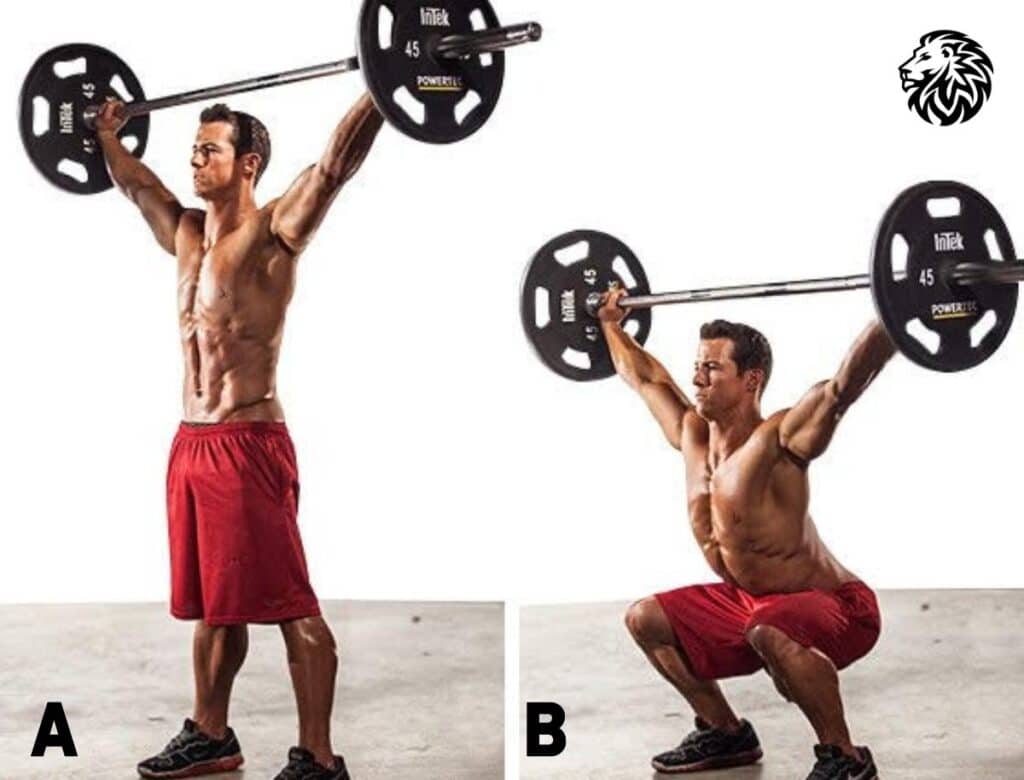
Unique Challenge and Benefits: Overhead squats present a unique challenge as they require not only leg strength but also significant upper body mobility and core stability. In this exercise, a barbell is held overhead with arms extended while performing a deep squat. This position challenges the entire body, with a specific emphasis on the quadriceps, shoulders, and core muscles. Overhead squats improve functional strength, enhance balance and coordination, and increase flexibility, particularly in the shoulders and hips. They are also excellent for identifying and addressing imbalances in the body.
Instructions on Performing with Focus on Form and Safety:
- Starting Position: Stand with your feet shoulder-width apart. Snatch or clean and jerk the barbell overhead with arms fully extended. Your grip should be wider than shoulder-width, and wrists should be in line with your forearms.
- Stabilize the Barbell: Before descending, ensure the barbell is stable overhead. Engage your core, squeeze your glutes, and pull your shoulder blades down and back.
- The Squat: Inhale and begin to lower your body by bending your knees and pushing your hips back. Keep your arms straight and the barbell positioned over your heels.
- Bottom Position: Squat down as deep as your flexibility allows, ideally until your thighs are parallel to the ground or lower. Your heels should remain flat on the floor, and your knees should track over your toes.
- Ascending: Drive through your heels to stand back up, keeping the barbell stable overhead. Exhale as you reach the top of the movement.
- Completion: Perform the desired number of reps. To safely lower the barbell, either drop it (if using bumper plates and a suitable platform) or carefully return it to your upper chest or back before racking.
Modifications for Beginners:
- Start with a PVC Pipe or Training Bar: Begin with a lightweight implement like a PVC pipe to practice form and balance before moving to a barbell.
- Overhead Press Mobility Drills: Improve shoulder mobility with exercises like overhead presses and pass-throughs using a PVC pipe or resistance band.
- Wall Squats with Overhead Reach: Practice squatting while facing a wall, reaching overhead. This helps train proper squat form and overhead positioning.
- Box Squats: Squat to a box or bench to ensure consistent depth while learning the movement.
- Gradual Progression: Slowly increase the weight as you become more comfortable with the form and the movement becomes more fluid.
Overhead squats are complex and require patience and practice to master. Incorporating them into your routine can significantly enhance overall body strength, flexibility, and functional movement patterns.
Incorporating These Exercises into Your Routine
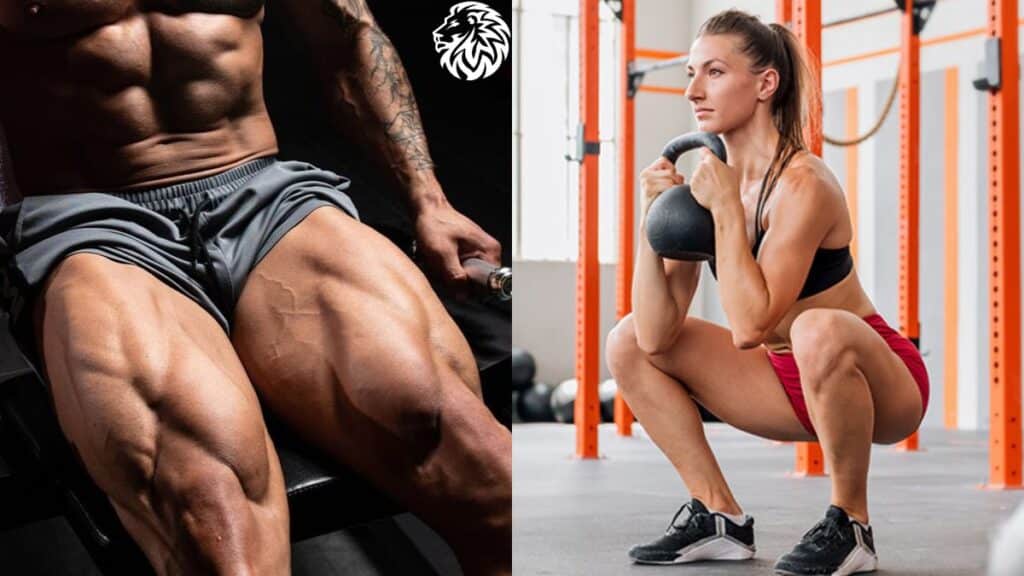
Integrating these seven barbell quad exercises into your leg workout can lead to significant improvements in strength, muscle mass, and overall lower body functionality. Here are some tips and advice to help you effectively incorporate them into your routine:
- Balanced Approach:
- Avoid doing all seven exercises in a single session. Instead, choose 2-3 exercises per leg workout to prevent overtraining.
- Mix and match exercises to target the quads from different angles and to keep the workouts varied and engaging.
- Frequency:
- Plan leg workouts 1-2 times a week, allowing adequate recovery time. Quads, being a major muscle group, benefit from at least 48 hours of rest between intense sessions.
- For balanced development, ensure your routine also targets other leg muscles like hamstrings, calves, and glutes.
- Sets and Reps:
- For strength building, focus on 3-5 sets of 4-6 reps with heavier weights.
- For muscle growth (hypertrophy), aim for 3-4 sets of 8-12 reps with moderate weight.
- For endurance and toning, do 2-3 sets of 15-20 reps with lighter weights.
- Progression:
- Gradually increase the weight as you get stronger. A good rule of thumb is to increase the weight when you can complete two more reps than your target in the final set.
- Alter the rep range, sets, or weight every 4-6 weeks to continuously challenge your muscles and avoid plateaus.
- Safety and Form:
- Prioritize proper form over lifting heavier weights. Incorrect form can lead to injuries and reduced effectiveness.
- Consider working with a trainer to ensure you’re performing each exercise correctly, especially if you’re new to these movements.
- Recovery:
- Incorporate recovery strategies like stretching, foam rolling, and adequate nutrition to aid muscle repair and growth.
- Ensure you’re getting enough protein in your diet to support muscle recovery and growth.
- Listen to Your Body:
- If an exercise doesn’t feel right, modify it or choose an alternative. Not every exercise is suitable for everyone, depending on individual biomechanics and previous injuries.
By following these guidelines, you can effectively integrate these exercises into your leg training routine, leading to improved quad strength and overall leg development. Remember, consistency and gradual progression are key to achieving long-term fitness goals.
Conclusion
The strength and conditioning of the quadriceps are vital for not only athletic performance but also for everyday activities. Strong quads contribute to stability, mobility, and the overall health of your lower body, particularly in safeguarding the knee joints. The use of barbells in quad exercises, as we’ve discussed, offers a robust method to effectively target these crucial muscles. Barbell exercises provide the necessary resistance to challenge and build your quads, allowing for a range of movements that can be adjusted according to individual fitness levels and goals.
Consistency in your workouts, coupled with proper technique, is paramount for achieving the best results. It’s not just about the frequency of your workouts but also about maintaining the correct form and progressively overloading the muscles in a safe and structured manner. Remember, quality always trumps quantity, especially when it comes to strength training.
As you integrate these exercises into your routine, be patient with your progress. Strength and muscle development take time and dedication. Celebrate the small victories along the way – every extra rep, every increase in weight, and every time you feel stronger than the last workout. These are the moments that add up to significant improvements over time.
Finally, let your journey to stronger quads be a part of a broader commitment to a healthier, more active lifestyle. Embrace the challenges, enjoy the process, and always strive to be a better version of yourself. Your determination and hard work will pay off, not just in your physical appearance, but in the newfound strength and capabilities you’ll discover in yourself. Keep pushing, stay focused, and let the strength of your quads be a testament to your overall resilience and dedication to fitness.
